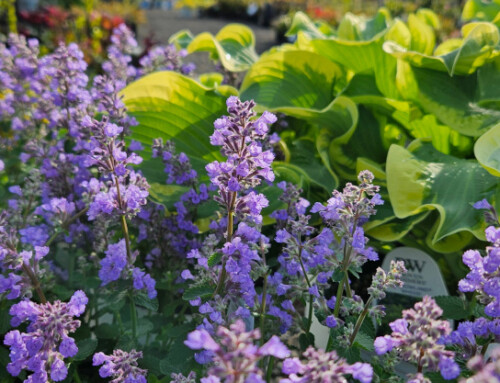Early season produce is beginning to ripen in gardens, strawberry stands are sharing their sweet harvest, and long days mean evening fun watching kids shoot hoops or play in the yard. All this can mean only one thing: summer has arrived. With the arrival of a new season, our tasks in the garden shift slightly, giving gardeners a new set of goals to keep plants performing their best throughout the summer. Here are a few garden tasks I have on my to-do list this month.
First, it’s not too late to plant, whether you’re reseeding a winter-damaged lawn, filling the vegetable garden, or trying to decide what flowers to put in that one pot you forgot you had in the garage and can’t stand to leave empty.
No thanks to the cold, wet weather that dominated the last half of May, many of the vegetable starts you so eagerly planted around Mother’s Day might be stunted, yellowed, or flat out dead. While we’re sold out of vegetable starts for the season, it’s not too late to plant many things from seed, with notable exceptions being tomatoes and peppers. So, if your vegetable garden could use a redo, don’t be afraid to stop at the nursery for a few packs of garden seeds and get them in the ground—after all, the warmer soil temperatures of early summer will help your new plants catch up quickly!
Early June is also a great time to finish filling your containers with summer color. Perhaps you’ve been holding off with planting while you let your tulips or daffodils die back or you just got home from a late spring vacation and haven’t yet started. Whatever the reason, early summer is a great time to get some planting done—the flowers you’ll find at the nursery will be big and lush and unlike early-season planting, you won’t have to wait to see the blooms as you figure out your planting combinations.
Second, with the busyness of May past, now is the time to solidify your watering and fertilizing schedule. Late spring can be hectic if you have kids or grandkids in school, with sports, concerts, and programs filling the calendar. As you settle into a little more relaxed summer schedule, make it a goal to get into a rhythm of watering and fertilizing your flowers consistently.
People regularly ask me what the secret is to growing beautiful, vigorous flowers and hanging baskets. Among a few other things, consistent, daily watering and weekly feeding with a high-quality fertilizer are absolutely essential. I recommend using Jack’s Classic fertilizers to feed flowers and hanging baskets, alternating each week between All Purpose for plant growth and Blossom Booster for flower production. Use as directed—with any fertilizer, more is not always better, and even the best fertilizers can burn your plants if you use too much.
Third, check your plants regularly for garden pests. As much as we love to see fresh, vibrant growth on plants around the yard, so too do aphids, caterpillars, and slugs or snails. Whether you prefer a quiet morning stroll through the garden with a cup of coffee in hand or like to poke around your flowerbeds in the evening after the day’s tasks are done, take a few minutes each week to inspect for bugs. Aphids—the oval-shaped small green, brown or black bugs that cluster on tender new growth and flower buds—can explode in population seemingly overnight, sucking the juices out of plants and ruining otherwise beautiful leaves and blooms. And of course, we’ve all seen the damage that a few caterpillars or slugs with an appetite can cause.
To treat for aphids, you may find that a harsh blast of water is enough to dislodge them and knock them off your plants, but for a quick kill, I spray with Bonide Neem Oil or BioAdvanced Insect, Disease & Mite Control. In the vegetable garden, I’ve had great success preventing aphids and other garden pests with Eight insecticide, available at the nursery as a garden dust or granules. And for slugs and snails, I recommend a granular slug bait like Sluggo to keep your plants’ leaves free from damage.
Finally, June is a crucial time to keep on top of weeds in the garden. Until summer heat and long stretches of dry weather finally slow down plant growth, the weeds in your garden, flowerbeds and lawn will be just as eager to grow as anything you’ve planted—and maybe even more so! Whenever possible, pull weeds when they’re small and certainly before they’ve gone to seed, at which point they’ll make themselves at home in your garden for years to come.
I love the long days, blue skies, and warmer breezes of early summer. Watching the plants around our gardens grow, bloom, and produce their harvest is a joy not to be taken for granted. As you work around your yard this month, enjoy settling into your summer routines and keeping your plants looking their best!








Leave A Comment